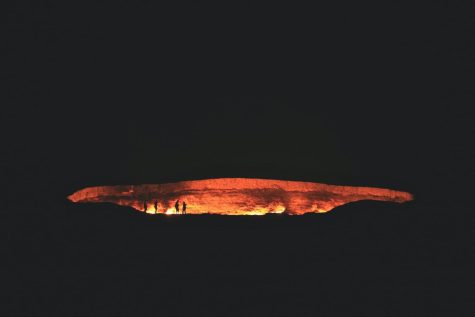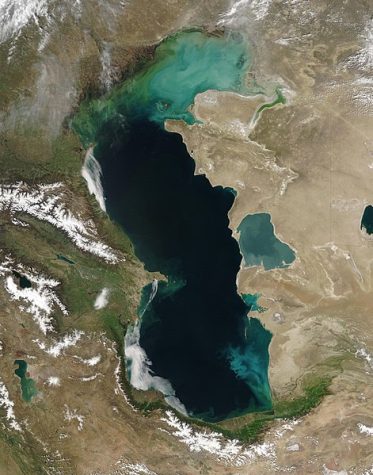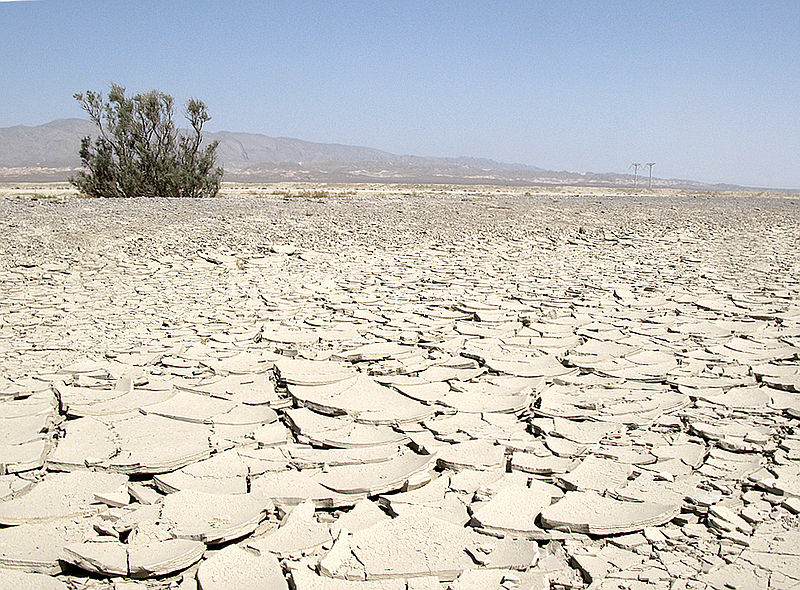The Geographical Gold of Turkmenistan
Come take a deep dive into one of central Asia’s wonderful countries- Turkmenistan.
flydime, CC BY 2.0
The cracked landscape of the Karakum Desert
Relatively unknown, Turkmenistan is a small landlocked country located in Central Asia bordered by Kazakhstan, Uzbekistan, Afghanistan and Iran. It is one of the least visited countries due to its infamous xenophobia. Although Turkmen aren’t too open to the idea of foreigners, perhaps it’s because they want to keep the natural beauty of their nation to themselves. At just 188,456 squared miles (compared to America’s size of 3.797 million squared miles), Turkmenistan is considered small. However, the geographical wonders located in this desert country are wonderful.

The Karakum Desert (in the Turkmen language, the name means “Black Sand”) covers about 70-80% of Turkmenistan. Rainfall there is very rare with the entire area only 70-150 mm of rain each year. Wildlife in the Karakum Desert is not very diverse (due to it being a desert) and consists mostly of ants, termites, ticks, snakes, lizards, turtles, and several bird species such as alauda and desert sparrows. On top of that, there are several mammal inhabitants of the desert including the tolai hare, goitered gazelle, and corsac fox. Around Turkmenistan’s border with Iran, the Karakum Desert transforms into the low rising mountains of the Kopet Dag.
As beautiful as this may sound, something frightening lies in the Karakum Desert: the Davarza Gas Crater. Discovered in 1971, the crater was the result of a natural gas field collapsing into a cavern by Davarza, Turkmenistan. The origin of its ignition is greatly debated, but a very popular theory is that Soviet geologists set it on fire intentionally in an attempt to spread methane gas, and the crater has been burning ever since. As dangerous as it is, however, it is a pretty popular tourist destination. Perhaps, people wish to see the “Gates of Hell” with their own eyes.

To the west of the country sits the Caspian Sea- the world’s largest inland body of water. Funnily, the Caspian Sea is also one of the original “7 seas.” Basically, a body of water that pirates deemed worthy enough to be a sailable and unknown body of water. Technically, the Caspian Sea is neither classified as sea nor lake, but is to be treated as a sea on the request of nautical jurisdiction. To add to the confusion of the Caspian, its waters are salty but are diluted by freshwater flowing in from the Volga River to the north. Similar to the salinity of the water, the species of the Caspian Sea are a mix of freshwater and saltwater species which includes sturgeon, perch, mollusks, and sponges.
Moving back to more solid ground, it wouldn’t be a lie at all to say that Turkmenistan is a hot, dry place. Its desert’s climate is similar to that of the Sahara or Gobi. With cold nights and burning hot days, the Karakum is your typical desert. Across Turkmenistan, they have hot and dry summers and mild but also dry winters. Sadly, like most central Asian countries, Turkmenistan receives virtually no rain. When it does rain, it usually happens between January and May. The capital Ashgabat in south central Turkmenistan receives an average of 225 cm (8.9 inches) per year. However, this lack of rain may be in part due to the radically varying temperatures that can range from 32 degrees F to over 100 degrees F.
Turkmenistan has a beautiful and diverse climate and geography filled with wonderful species and tourist destinations. If you ever want a change of scenery, Turkmenistan might be the place to go!


